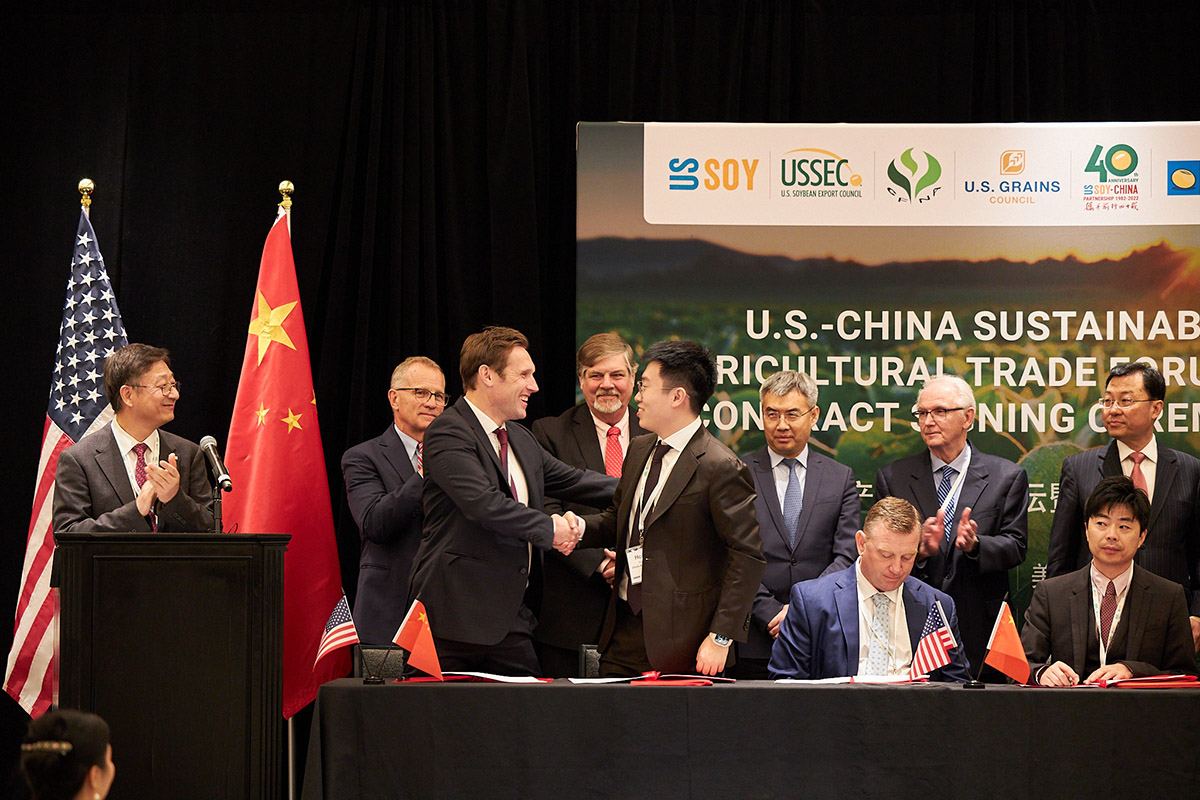Why Did Trump Attack European Trade? A Deep Dive Into His Policies

Table of Contents
The "America First" Doctrine and its Impact on Transatlantic Trade
The core tenet of Trump's economic policy was undoubtedly "America First." This doctrine prioritized domestic interests above international cooperation, fundamentally altering the US's approach to global trade. This "America First" philosophy directly influenced his aggressive trade actions against Europe. Instead of focusing on multilateral agreements designed to foster cooperation and mutual benefit, Trump favored bilateral deals tailored to maximize perceived American advantages.
- Emphasis on bilateral trade deals: Trump consistently prioritized bilateral agreements over multilateral ones, such as the World Trade Organization (WTO) agreements, believing that such deals offered greater flexibility and leverage.
- Focus on reducing the trade deficit: A key driver of Trump's trade policy was a strong desire to reduce the US trade deficit, particularly with countries like those in the European Union. He viewed trade deficits as a sign of economic weakness.
- Criticism of existing trade agreements: Trump openly criticized existing trade agreements like NAFTA (now USMCA), arguing they were unfair to the United States and led to job losses. This sentiment extended to his view of trade relationships with Europe.
- Specific trade actions: This approach manifested in various trade actions against Europe, including tariffs on steel and aluminum, and threats of tariffs on automobiles.
Concerns Regarding Trade Deficits and National Security
Trump consistently expressed deep concern over the US trade deficit with the European Union, framing it as a symbol of American economic vulnerability. He believed that this imbalance reflected unfair trade practices by European nations. This perception fueled his belief that assertive trade actions were necessary to rectify this imbalance and protect American industries.
- Industries affected by import competition: Sectors like steel, aluminum, and agriculture felt the pressure of European competition, leading to calls for protectionist measures.
- Tariffs as a tool: Trump frequently used tariffs as a tool to address perceived trade imbalances, believing they could level the playing field and encourage reciprocal concessions from European partners.
- National security arguments: He frequently invoked national security concerns to justify trade actions, arguing that certain European imports posed a threat to US national security interests. This argument was notably used to justify tariffs on steel and aluminum.
- Trade deficit and national security: The perceived trade deficit often intertwined with national security arguments, providing a justification for aggressive trade policies that often bypassed traditional diplomatic channels.
Challenges to the World Trade Organization (WTO) and Multilateralism
Trump frequently criticized the WTO, particularly its dispute settlement system, claiming it was biased against the United States and ineffective in addressing unfair trade practices. This skepticism towards multilateral institutions contributed significantly to his unilateral approach to trade.
- US-EU disputes within WTO: Numerous trade disputes between the US and EU played out within the WTO framework, often ending in rulings that Trump perceived as unfavorable to the US.
- Challenges to WTO authority: Trump repeatedly challenged the WTO's authority, threatening to withdraw the US from the organization altogether.
- Impact on WTO functioning: His actions undermined the WTO's legitimacy and effectiveness, raising concerns about the future of multilateral trade governance.
- Unilateral approach: This distrust in the WTO contributed heavily to Trump's preference for a unilateral approach to trade with Europe, bypassing established international norms and mechanisms for dispute resolution.
The Steel and Aluminum Tariffs: A Case Study
A prime example of Trump's trade policies was the imposition of tariffs on steel and aluminum imports from the European Union. The administration justified these tariffs on national security grounds, arguing that these imports threatened US national security.
- National security argument: The national security argument, while controversial, allowed the administration to bypass standard WTO procedures and impose tariffs without facing immediate legal challenges.
- EU response and trade war: The EU responded with retaliatory tariffs on various US goods, escalating the conflict into a trade war with significant economic consequences.
- Economic and political consequences: The tariffs resulted in higher prices for consumers, disruptions to supply chains, and strained relations between the US and the EU.
Political Considerations and Domestic Support
Trump's trade policies towards Europe were significantly shaped by domestic political considerations. His approach resonated with specific segments of the American electorate and helped solidify his support base.
- Appealing to voters: Trump's protectionist rhetoric appealed to a significant portion of the American electorate who felt left behind by globalization.
- Pressure from domestic industries: Domestic industries facing intense competition from European imports exerted significant pressure on the administration to adopt protectionist measures.
- Political leverage: Trade policy was also used as a tool for political leverage in negotiations with other countries, including those in Europe.
- Intensity of trade actions: Political calculations influenced both the intensity and nature of Trump's trade actions against Europe, reflecting a blend of economic and political strategies.
Conclusion: Understanding Trump's Approach to European Trade – A Summary and Call to Action
Donald Trump's attack on European trade stemmed from a confluence of factors: his "America First" doctrine, deep-seated concerns about trade deficits, and a profound skepticism towards multilateral institutions like the WTO. These factors, interwoven with domestic political considerations, shaped his aggressive and often unilateral approach to trade negotiations. His actions had significant economic and political ramifications, impacting not only the transatlantic relationship but also the global trading system. Further research into the complexities of why Trump attacked European trade is crucial for understanding current international relations and formulating effective strategies for navigating future trade disputes. Let's continue the conversation about the long-term effects of Trump's trade attacks on Europe and the broader implications for global trade.

Featured Posts
-
 A Critical Assessment Of Armando Iannuccis Later Work
May 26, 2025
A Critical Assessment Of Armando Iannuccis Later Work
May 26, 2025 -
 Pogacar Triumphs A Stunning Tour Of Flanders Solo
May 26, 2025
Pogacar Triumphs A Stunning Tour Of Flanders Solo
May 26, 2025 -
 North Myrtle Beachs Water Crisis Understanding The Public Safety Implications
May 26, 2025
North Myrtle Beachs Water Crisis Understanding The Public Safety Implications
May 26, 2025 -
 Nike Running Shoe Guide 2025 Performance And Style Match
May 26, 2025
Nike Running Shoe Guide 2025 Performance And Style Match
May 26, 2025 -
 Prenez Le Depart Le Jeu De Management Cycliste Rtbf Arrive
May 26, 2025
Prenez Le Depart Le Jeu De Management Cycliste Rtbf Arrive
May 26, 2025
Latest Posts
-
 China Soybean Market Sinograins Auction And Its Impact On Supply
May 29, 2025
China Soybean Market Sinograins Auction And Its Impact On Supply
May 29, 2025 -
 Sinograin Auctions Imported Soybeans To Combat Chinas Supply Crisis
May 29, 2025
Sinograin Auctions Imported Soybeans To Combat Chinas Supply Crisis
May 29, 2025 -
 Chinas Sinograin Soybean Auction Addressing Supply Shortages
May 29, 2025
Chinas Sinograin Soybean Auction Addressing Supply Shortages
May 29, 2025 -
 Eight Shows Six Years No Cancellations The Enduring Power Of Tyler Perry On Bet
May 29, 2025
Eight Shows Six Years No Cancellations The Enduring Power Of Tyler Perry On Bet
May 29, 2025 -
 Tyler Perrys Six Year Reign On Bet Eight Shows Still Going Strong
May 29, 2025
Tyler Perrys Six Year Reign On Bet Eight Shows Still Going Strong
May 29, 2025
